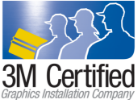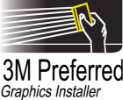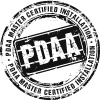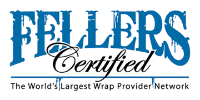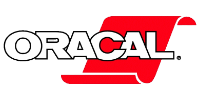The price of a vehicle wrap isn’t a simple, one-size-fits-all number; it’s a dynamic equation influenced by a fascinating interplay of material science, design complexity, vehicle anatomy, and installation expertise. Think of it less as a fixed cost and more as a tailored solution, where each variable holds a surprising weight in the final investment. At Capital Wraps, our two decades of experience have allowed us to dissect these factors, revealing the true drivers behind a wrap’s value.
The Typology of a Wrap: It’s Not Just Vinyl on Metal
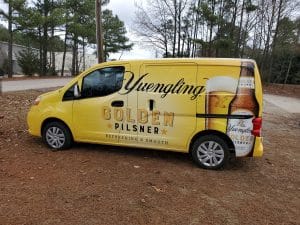
Imagine standing before a blank canvas. For some, it’s a simple flat board; for others, it’s a meticulously carved statue. Vehicles are much the same. This inherent “shape” is the first, often unseen, influence on your wrap’s price.
-
Vehicle Size and Type: This is the most obvious. Wrapping a compact car requires less material and time than a full-size commercial truck or a complex fleet of buses. Each square foot adds to the material cost, and the sheer scale dictates labor hours. Consider the long, smooth expanses of a box truck versus the intricate curves and recesses of a modern passenger car. The former is a relatively straightforward application; the latter demands far more finesse.
-
Vehicle Condition and Surface Prep: Here’s where the story gets interesting. A pristine, recently painted vehicle requires minimal prep. But a vehicle with existing dents, rust, peeling paint, or even old decals – that’s a different narrative. Our team must meticulously repair, clean, and degrease every surface. This isn’t just about adhesion; it’s about the final aesthetic. A wrap will amplify surface imperfections, not hide them. If we must strip old graphics or fix paint damage, that critical preparation time adds to the overall investment.
The Material’s Hidden Life: Beyond the Pretty Picture
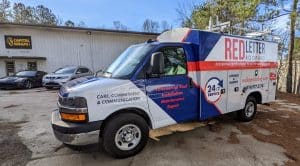
The vinyl itself isn’t a commodity; it’s an advanced material engineered for specific challenges.
- Type of Vinyl Film: Not all vinyl is created equal. Premium cast vinyls from industry leaders like 3M, Avery Dennison, and Orafol (Oracal) offer superior conformability (especially around curves and rivets), color vibrancy, and durability. These films are engineered to last, resist fading, and, crucially, to remove cleanly without damaging your original paint. Cheaper, calendared films exist, but they are less flexible, prone to shrinking, and can leave behind stubborn adhesive or even damage paint upon removal. You’re paying for the science and the peace of mind.
- Finish and Special Effects: A standard gloss or matte wrap has a baseline cost. But what if you desire a truly unique statement? Chrome, brushed metal, carbon fiber textures, or iridescent “color shift” films come with a higher material cost due to their specialized manufacturing processes. These aren’t merely colors; they’re optical illusions and tactile experiences that transform your vehicle.
The Unseen Hand of Design: Where Ideas Become Reality

A wrap is an advertisement, a statement, a piece of art. Its effectiveness begins long before installation.
- Design Complexity: A simple logo placement on a solid color is one thing. A multi-layered design with intricate patterns, complex gradients, or photorealistic images is another entirely. This requires significant graphic design expertise, precise color matching, and meticulous file preparation to ensure perfect print quality and seamless alignment across vehicle contours. A compelling design isn’t just aesthetically pleasing; it’s a marketing tool.
The Craftsman’s Touch: The Art of Adhesion

This is where the rubber (or rather, the vinyl) meets the road. The installation isn’t just a manual task; it’s a highly specialized skill.
- Installation Difficulty: Some vehicles, like those with numerous rivets (think older box trucks) or complex compound curves (like a modern sports car), present significant challenges. Each rivet must be carefully post-heated and pressed for adhesion. Each curve demands precise stretching and trimming to avoid bubbles, wrinkles, or lifting edges. Our certified installers are craftsmen with thousands of hours of hands-on experience, capable of tackling these nuances. This expertise translates to a flawless finish that not only looks incredible but also maximizes the wrap’s lifespan.
- Coverage Area: A full wrap covers every painted surface. A partial wrap, while using less material, can sometimes be more challenging due to the need for precise alignment with the vehicle’s existing paint lines or unique contouring to create a “flow” that looks intentional.
The Long Game: Longevity and Removal

Finally, consider the hidden cost of a poor investment. A cheap wrap might seem appealing upfront, but if it begins to fail prematurely (peeling, fading, cracking) or proves agonizingly difficult and damaging to remove, the initial savings are quickly negated by repair, replacement, or removal costs. Our recommended 4-year lifespan for wraps isn’t arbitrary; it’s based on decades of industry data and experience to ensure optimal performance and cost-effective removal.
Conclusion
The price of a vehicle wrap is a reflection of the intricate details involved: the vehicle’s unique form, the advanced material chosen, the artistry of the design, and the unmatched skill of the installer. At Capital Wraps, our two decades of experience in crafting over 30,000 successful projects has given us a deep understanding of these hidden influences. We don’t just quote a price; we deliver a comprehensive solution, ensuring your investment results in enhanced brand visibility and a truly impactful mobile advertisement that stands the test of time and turns heads on the road.

